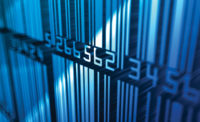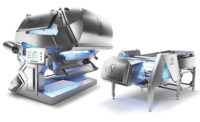Ingredient traceability is a growing compliance challenge for bakers and snack producers. Statistics show that the number of food-safety recalls has risen rapidly in recent years, and recalls are becoming more costly. Product recalls can cost companies millions of dollars, and damage to the brand’s reputation can impact sales potential for years to come. For companies impacted by recalls—including through potential ingredient contamination—rapid responsiveness is key to minimizing their impact.
In its “Food Traceability Survival Guide,” RFgen Software, El Dorado Hills, CA, cites a recent survey by RedPrairie, Alpharetta, GA, that reveals that only 52 percent of food companies can execute a recall within hours, as is expected with modern technology. As the guide notes: “Perhaps that is because 81 percent of companies surveyed were using either paper-based or only partially automated systems. All told, 46 percent of the companies were not fully compliant with current traceability regulations—including the Bioterrorism Act and the Food Modernization and Safety Act.”
Many software solutions are available to improve ingredient traceability methods, which can help companies prevent or deal with a recall, while helping improve product quality. Having a solid traceability plan in place can also offer manufacturers three primary benefits:
- It can ensure that brand reputation is maintained
- It can minimize the impact of consumer liability claims
- It can minimize the cost of an actual recall
For snack producers and bakers, implementing an ingredient traceability system entails finding the most-efficient ways to produce, store and distribute product. The result is improved quality of the finished product, reduced likelihood of product recalls and opportunities for expanded product sales.
“Many retailers and foodservice organizations will not purchase from manufacturers that cannot demonstrate a proven traceability and recall process,” says Brad Carney, president, FlexiBake Ltd., Maple Ridge, British Columbia. “Automated lot tracking, integrated with an enterprise resource planning (ERP) system, can drastically reduce the cost of implementing traceability.”
Perhaps the biggest benefit of traceability via lot tracking is the ability to prepare for and support a product recall, notes Jay Deakins, founder and CEO, Deacom Inc., Chesterbrook, PA. “When the FDA identifies a product as unsafe or incorrectly labeled, it is up to the manufacturer to trace back to the raw materials and identify the root cause,” he explains. “Proper lot tracking can help determine where in the supply chain the source of the problem originated so that action can be taken with minimal internal and external impacts. Manufacturers can determine specific lots that were impacted downstream of the problem and identify the customers who received those lots.”
Better traceability technologies
Traceability has evolved in recent years to a higher level of effectiveness. Barcode scanning, voice-recognition technology and radio frequency identification (RFID) are integrated to warehouse management and ERP systems to provide the necessary tracking so companies can react quickly to a recall.
Among a wide range of available traceability software and related products, RFgen Software is a mobile data collection solution that eliminates paper records to reduce errors, increase inventory accuracy and automate traceability. It works with barcoding, RFID and voice picking to track ingredients and finished products by lot, batch and serial numbers throughout the supply chain.
JDA Software, Waukesha, WI, offers Track & Trace as a companion to its JDA Warehouse Management solution. It provides users with access to a centralized source for product location and shipment information from a JDA or non-JDA inventory-management system representing warehouses, stores or suppliers. It also tracks inventory visibility, order status, inventory holds and recalls.
Deacom has developed DEACOM ERP, a single-system solution for batch and process manufacturers. Rather than attaching third-party add-ons or creating customizations, Deacom’s software incorporates all functionalities—formulation, lot tracking, quality control, warehouse management systems and mobile—for process manufacturers within one piece of technology.
Matrix Controls Co. Inc., Somerset, NJ, offers solutions that automate the collection of lot trace data from material receiving through finished product shipment. Unique lot codes are assigned to incoming materials and sub batches that are identified with barcode labels that can be scanned throughout the process. Finished product is then scanned into a sales order for shipping.
“Matrix software interfaces to existing material requirements planning (MRP) and ERP, as well as with financial business systems through industry-standard data file transfers,” says Brad Lindemann, president. “It also offers purchasing, sales order and warehouse management functionality.”
A systems integrator, Barcoding Inc., Baltimore, provides end-to-end RFID solutions. This includes provisioning software (real-time asset tracking and customized data capture) and hardware (RFID tags, readers, handheld computers and antennae), as well as site analysis, deployment, integration and ongoing system support.
More food processors are using special RFID tags equipped with battery-powered sensors to track and monitor product or ingredient temperatures, according to Tom O’Boyle, director of RFID, Barcoding Inc. “If a pallet or container reaches a hazardous temperature, this allows them to take action. Also, we are seeing more food processors utilize RFID tags to monitor humidity, pressure and motion,” he says.
In addition, some food processors are extending the traceability provided by RFID to their suppliers. “Suppliers can tag raw materials before they ship them for processing,” says O’Boyle. “So if there is a problem with the materials on the production line, the manufacturer can read the collected data, trace the issue back to where the item originated and alert the supplier.”
The latest traceability software is designed to handle a wide range of ingredients. For example, FlexiBake software reportedly can manage all ingredients and raw materials used in a typical food manufacturing operation. “Multiple suppliers and pack sizes can be stored for all raw materials, and details such as gluten-free status and allergens flagged,” explains Carney. “Organic, halal and kosher certificate numbers and expiration dates can be tracked, and the percentage of organic ingredients in the final product calculated.”
Getting one step ahead
Manufacturers see many technological advances in the area of traceability in the near future. “With widespread use of mobile technology by consumers, we see transparency becoming the next frontier,” says Kaley Parkinson, director of applied technology, Rehrig Pacific Co., Pleasant Prairie, WI. “It’s not enough for producers or retailers to just say they are compliant or safe. They need to prove it to the consumer. Technology is going to bring that right into the store aisle. Customers will be able to make those determinations themselves through their buying decisions.”
Near-field communication, a set of communication protocols that enables two electronic devices to establish communication; iBeacon, Apple’s technology standard that allows mobile apps to listen for and react accordingly to signals from beacons in the physical world; and other point-of-sale data-transference technologies will bring information currently used for government inspections into the hands of the public, notes Parkinson. “How companies choose to capitalize on this in their marketing efforts is going to create significant opportunities for forward-thinkers,” she says.
Carney notes the industry is moving toward paperless plants. “RFID will likely overtake barcodes as the preferred method of lot identification,” he says. “The ability to equip each person or machine on the production floor with a device and software that allows them to input lot numbers, quality measurements and actual yields minimizes the possibility of input errors and ensures that proper quality-control and lot-tracking data is collected and available in real-time.”
The future of traceability, technology-wise, will include integrated methods of collecting data on the production floor, predicts Scott McKenzie, regional sales manager, RFgen Software. “Examples include wearable scanning devices that will allow users to mix ingredients by hand and then scan raw-material information,” he says. “In addition, 2-D barcodes will help cut down on the number of scans necessary for collecting large amounts of lot and part number information.”
Today, it’s relatively easy to implement an asset-management program to combat loss rates and theft of returnable assets. “Looking to the future, bakers and snack producers will be able to simultaneously utilize barcode and RFID technology—applied to each returnable bakery tray—to help with order selection, warehousing, proof of delivery, traceability and product recalls,” says Parkinson.





